Save Money and Eat Healthy: 26 Ways To Make It Happen

Eating healthy and staying within a budget are admirable goals. But sometimes it seems they are at odds. Wondering how to eat healthy on a tight budget? Healthy food can be expensive, but it doesn’t have to be — especially if you plan ahead.
Here are 26 ways you can eat healthy on a modest grocery budget.
Learn More: Frugal People Love the 6 to 1 Grocery Shopping Method: Here’s Why It Works
Find Out: How To Get $340 Per Year in Cash Back on Gas and Other Things You Already Buy

Create a Grocery Budget
Once you’ve made the decision to eat healthier and stick to your budget, you need to determine what that budget is. Dig out your bank or credit card statements and look at what you’ve spent on groceries over the past three months. Divide by three to get your average grocery spending.
Use your average as a basis to start with. If you know you’re spending too much, reduce it by 20% and start with that number. You may need to revisit this over time. It may be cheaper to eat unhealthily rather than healthy, but you can still make healthy eating on a budget work for you.
Check Out: 7 Grocery Items To Avoid While on a Retirement Budget
For You: 5 Healthy Grocery Items Frugal People Buy at Sam’s Club
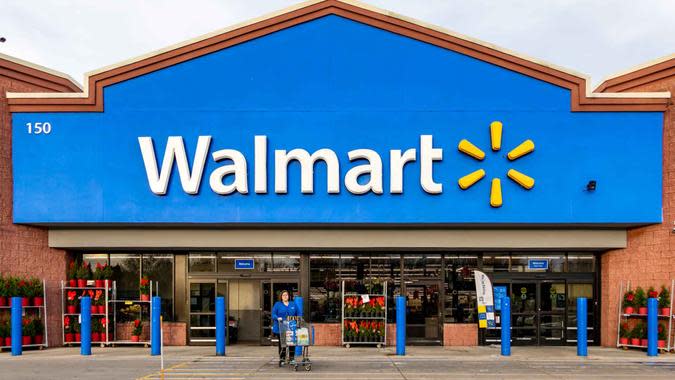
Compare Grocery Stores
Your nearest grocery store may not be the best one for you. Visit three or four local stores and compare their prices on things you actually buy. You may be surprised to find that one store is best for you, or you may need to work two stores into your weekly grocery shopping trip. If you plan to go to more than one store, make note of which items are cheaper at each store, so you’ll know what to buy where.
Wondering what you can eat on a healthy budget? Just about anything, but you’ll need to shop smart.
Trending Now: The Single Best Thing To Buy at Costco in April 2024
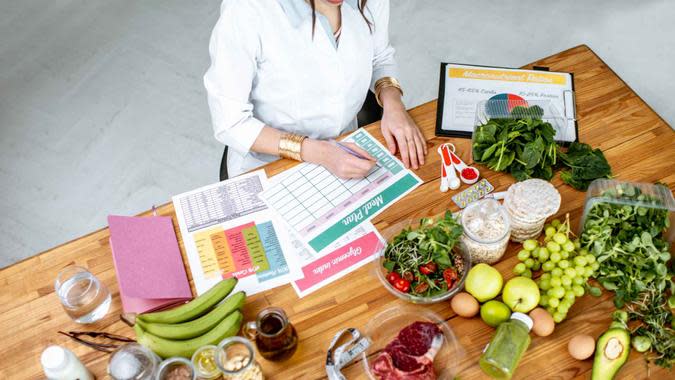
Plan Your Meals
Planning out your meals for the week will help you with both of your goals: you’ll eat better because you’ll know what you’re having, and you’ll save money because you’ll only buy what you need.

Allow for Snacks
Factor healthy snacks into your plan. Having something on hand to grab between meals can help you stay on track. Not accounting for snacking can cause you to run out for something quick, unhealthy and pricey, so it’s best to be prepared.
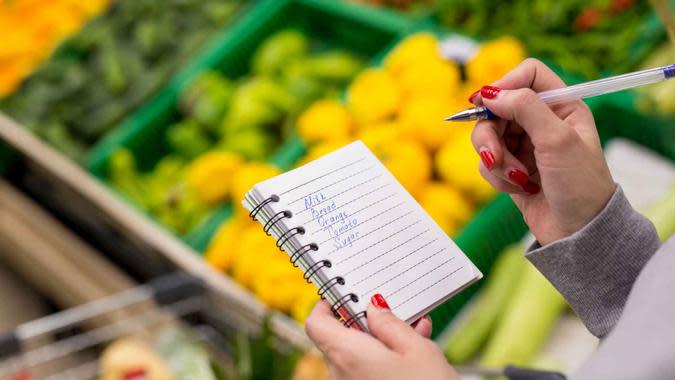
Make a Grocery List and Stick to It
Make sure you have a list — on paper or on an app, but not just in your head. Stick to the list, but allow yourself some flexibility for sale items.
For example, if you have regular navel oranges on your list but Cara Cara oranges are on sale, go for the sale price. If chicken breasts are on sale, buy those instead of the chicken thighs that are on your list; another plus is that chicken breasts tend to be leaner than thighs.
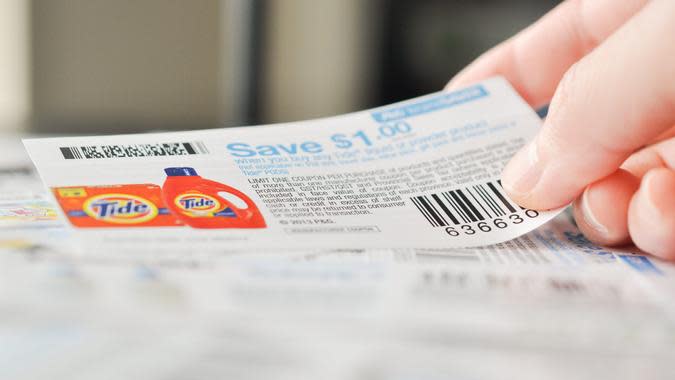
Use Coupons and Apps
If your grocery store of choice has an app or loyalty card that offers savings, be sure to use it. And watch for coupons you can use to buy what’s on your list. If you have a coupon for a sale item, that’s even better!
Be Aware: Dollar Tree Is Raising Prices: 9 Products To Buy Now Before They Increase

Shop Your Stores’ Weekly Sales
Most supermarkets send out a flyer every week promoting the items they’ll have on sale the following week. Check out the sale items, and try to work them into your meal planning. Make note of the sale items on your list.
If you’re shopping at more than one store, a sale item at one store may be cheaper than the regular price at your usual store, so watch for that.

Have a Snack Before You Go
Shopping when you are hungry can lead to impulse purchases and poor choices. Have a healthy snack before you head out to the store, so you won’t be tempted to dump extra items in your cart.

Shop the Perimeter
Grocery stores typically have their produce, meat, dairy and frozen foods around the outside of the store. The center aisles usually house processed foods, along with paper goods and household products. Shopping the perimeter of the store instead of the inside aisles — unless you need toilet paper, of course — will help you stick to your list.
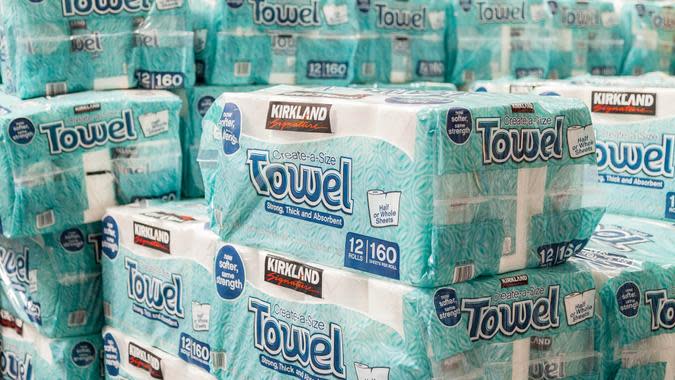
Buy in Bulk, but Be Smart
Large sizes of products are often a better deal, but before you reach for that five-pound bag of clementines, be sure you’ll eat them all before they go bad. If you’re throwing away spoiled food, you haven’t saved anything.
Discover More: I’m a Sam’s Club Superfan: These Are the 5 Best Spring Items To Buy

Buy the Store Brand
Name-brand products are often more expensive than the same product with the store’s label. But they may not be healthier or even tastier. Try the store brand when it’s available — if you don’t like it, you can always go back to the more expensive name brand.
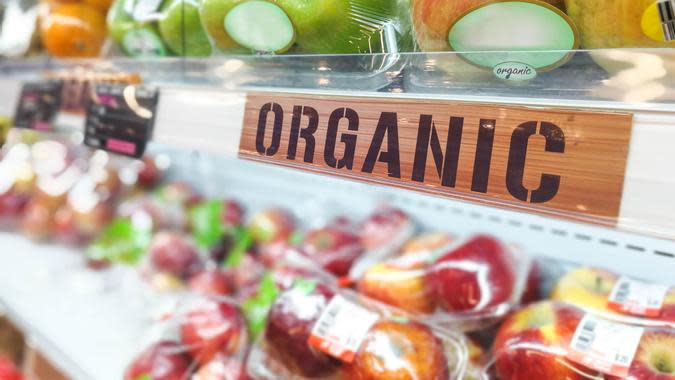
Weigh the Pros and Cons of Buying Organic
Organic foods are often pricier, and may not provide significant, if any, health benefits. Rather than paying more money for organic produce, buy locally grown fruits and vegetables.
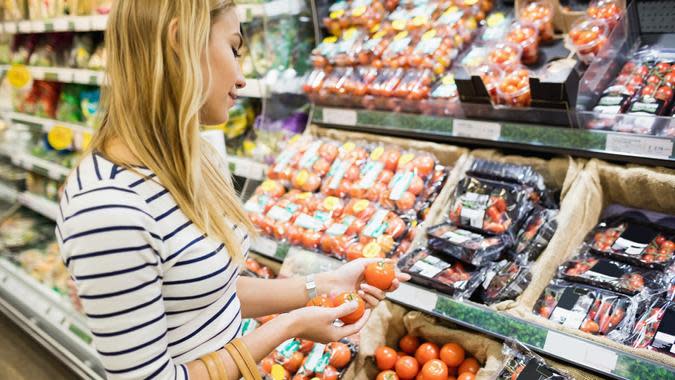
Buy Fresh Produce in Season
Most fruits and vegetables are more plentiful in the summer months, which drives their prices down. Take advantage of this and buy your fresh strawberries in June or July. During the fall, look for squash and other root vegetables.

For Out-of-Season Produce, Buy Frozen
If your favorite fruits and vegetables aren’t in season at the moment, don’t despair. Head for the frozen food aisle. According to the USDA, frozen vegetables are as healthy as fresh — and may cost less. Frozen fruits are great for making healthy smoothies or mixing them in with yogurt for a healthy breakfast.
Read Next: The Single Best Deal for Your Money at BJ’s Wholesale Club in April
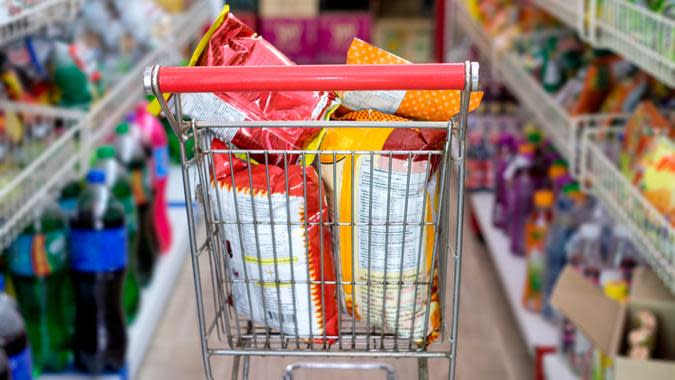
Avoid Buying Processed Foods
Processed foods represent a double whammy when it comes to eating healthy on a budget. They tend to be both more expensive and less nutritious. So, stay away from the crackers, chips, cookies and other processed foods at the grocery store.

Compare Unit Prices
It can be tricky to try to figure out which option is cheaper when you’re comparing different sizes of foods. That’s why grocery stores provide the unit price of each product on a sticker on the shelf. This sticker will show you how much an ounce or a gram of the product costs, regardless of the size of the container it comes in.
Comparing unit prices can help you determine the best value.
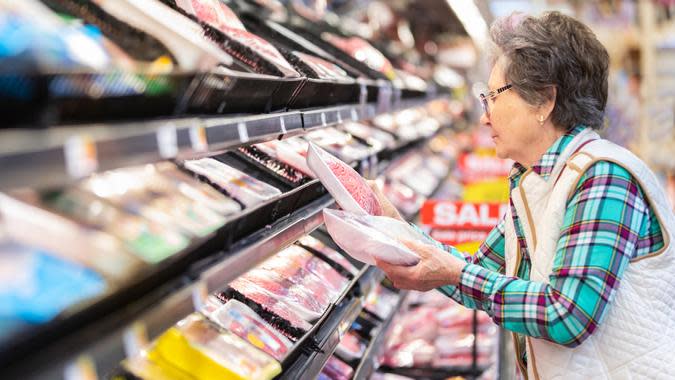
Buy Less Meat
Meat is pricey, and many people eat too much of it. The USDA guidelines suggest 5.5 ounces of lean meat or protein each day if your suggested calorie intake is 2,000. That’s a lot less than many restaurant-sized portions of meat in a single meal and probably less than what you’re used to eating, even at home.
In addition, non-meat proteins like lentils, beans, tofu, quinoa or oatmeal can be a healthy and less expensive substitute.

Shop Online
Buying your groceries online can help you reduce the number of impulse buys you make. You can also see how much you’re spending as you add items to your cart, which can help you stay within your budget. Plus, you can’t smell the muffins baking as you pass through the bakery aisle!
Explore More: 6 Things Minimalists Never Buy — and You Shouldn’t Either

Try Community Supported Agriculture
With the recent emphasis on local produce, farmers have taken to selling their crops directly to consumers in many cases. Community Supported Agriculture, or CSA, is a way for consumers to buy local produce directly from the farm.
It’s usually a subscription or membership service, so you’ll get seasonal produce throughout the growing season. You may even get some new vegetables or fruits you’ve never tried before!
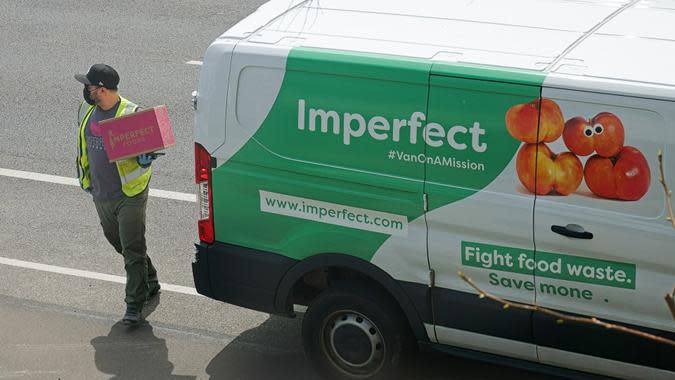
Buy Food That’s Less Than Perfect
You know all those stacks of perfect, shiny apples you see in the supermarket? News flash: not every apple comes off the tree looking like that. There is a lot of produce that’s not attractive enough for grocery stores to display, but it’s perfectly good to eat. It’s also cheaper.
You can look on the discount rack at your local grocery store, or try subscription services like Misfits Market or Imperfect Foods.

Grow Your Own
You may not have room for a full-fledged farm in your back yard, but you can grow some vegetables and herbs in containers on a sunny porch. In addition to cultivating a fulfilling hobby, you’ll get super fresh food at a really cheap price.

Cook at Home
Take-out food may be delicious, but it’s usually unhealthy and expensive. Plus, you just bought all those delicious, healthy groceries. So, make your meals at home.
Find Out: 10 Expenses Most Likely To Drain Your Checking Account Each Month

Bring Your Lunch to Work or School
Just like grabbing take-out for dinner, going out for lunch shouldn’t be a habit if you’re trying to eat healthier on a budget. Bring your lunch from home, so you can be sure it’s both healthy and economical.

Drink More Water
Water is free — or inexpensive if you’re a bottled water drinker — and good hydration is important to good health. Plus, drinking a lot of water will help you feel full faster if consuming fewer calories is part of your healthy eating plan.
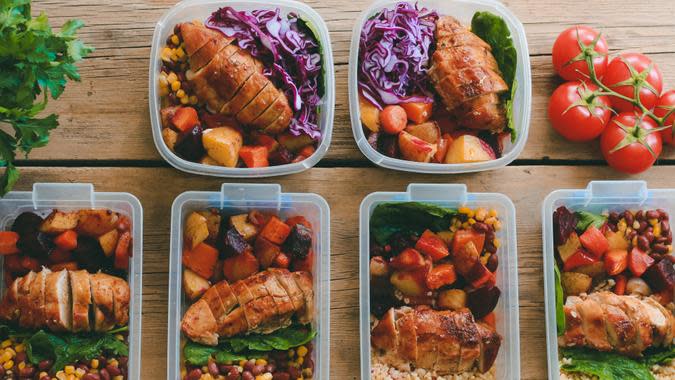
Meal Prep
Cooking at home can be time-consuming, but if you prepare several meals ahead of time, you can cook once and eat for days. Making a variety of salads to bring to work or school for lunch will keep you from getting bored and help keep you within your budget.
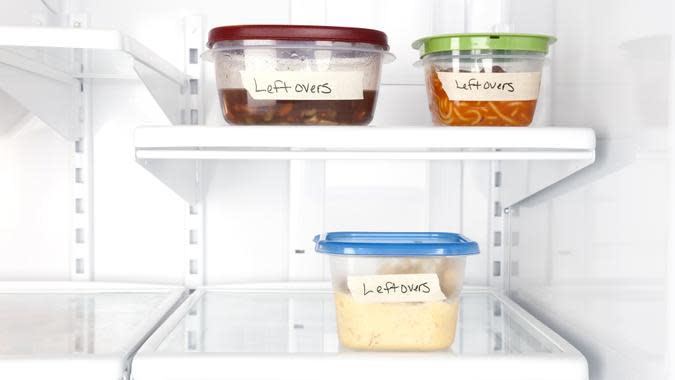
Use Leftover Ingredients
Reheating last night’s dinner for lunch is one thing, but use your imagination to see if you can create something new, instead. The extra chicken and vegetables you have from dinner can become delicious soup for the next day. Just add a few additional vegetables and some broth, and you’re good to go. If you made extra quinoa for dinner, throw it into tomorrow’s salad for lunch.
Try to plan your meals so that you’re using up most ingredients within a few days, since fresh foods have a short shelf life.
Eating healthy on a budget is a worthy goal, and it’s not impossible. With these tips and a little determination, you’ll be saving money and feeling better in no time.
More From GOBankingRates
Why Florida's Retirees Are Fleeing -- And Where They're Going Instead
Here's How to Add $200 to Your Wallet -- Just For Banking Like You Normally Would
This article originally appeared on GOBankingRates.com: Save Money and Eat Healthy: 26 Ways To Make It Happen






